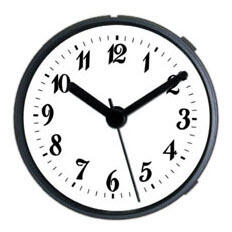
Clockmaking with Individual Clock Hands and also DialsClock hands as well as dials offer the most distinctive visual effect of a watch. Clock dials as well as hands function as a group in drawing out design and tone, as well as they assist the observer to get the moment promptly as long as they are contrasting and also well matched. In this write-up we discover just how to achieve a well-matched and different set, and also how to ideal represent your wanted appearance.Clock hands as well as dials are truly the focus of attention, as well as it is not surprising that clockmakers devote their initiatives to combine them strikingly. This is not to minimize the role of the clock motion in properly placing the hands over the face continually. However the motion is pure feature and also stays unseen; style (form) must be drawn out through the visual parts.Structure clocks from scratch entails choosing your very own parts, and you ought to pursue a linked, unified appearance. The hands and also dial are the all-natural emphasis, however the total performance of the watch needs to be established first. Including certain features or novelties might have an influence on one or both of these part.There is an excellent variety of clock movements out there, each with a specific mix of features. The essential feature is timekeeping, indicating revealing the present time continuously to whatever extent preferred. That is, though one of the most usual cycle is twelve hrs (when everything go back to its starting state), some motions extend the cycle to something much longer, potentially needing a different looking dial as well as maybe requiring an additional hand.For instance, you can obtain a 24-hour movement, biking once a day instead of twice. The equivalent dial will certainly show an added loads numbers, either doubling up with the initial lots or spread out over the circumference; the latter layout is inaccessible with the exception of big clocks. One motion turns the hr hand twice a day, the other once daily.Longer cycles are the week and the month. These motions need adjusted dials that reveal the days of the week or dates in the month, respectively. An added hand points to the corresponding day or day.Still other movements supply keeping an eye on tide level (for those in coastal settings) or reporting weather sensations such as temperature level and moisture. The dials and also hands for these are specially created to work with them, and might resemble the round format or might involve a solitary hand going back and forth over a restricted range.When your clock movement is selected, you can transform your attention to the hands and dials, concentrating on sizes and also styles. Dial and also hand sizes must match, of course, as well as their styles should be complementary. Offering consist of a variety of shapes and also shades, and dial text can be found in Arabic or Roman (or icons).Dial size sizes vary from a few inches to perhaps six feet (with big clocks placed straight on a wall as opposed to searching for big enough instances). As soon as you exceed around 14 inches, the minute hand comes to be as well hefty for a typical movement to rotate. In such cases buy a "high-torque" version of the very same motor you have chosen, and it should do correctly.Give some believed to whether you want your clock to have a pre-owned, as well as if so, whether you prefer the common tick-and-stop (audible) action or a continuous, silent sweep action. The motor ought to support one activity or the various other, and also you can choose simply not to mount the pre-owned if it appears additional.When you grasp the fundamentals of building wrist watches from components, you might wish to discover various other elements such as seeming chimes or replicating older clocks with oscillating pendulums. However essential clockmaking begins with specific clock hands and also dials.


